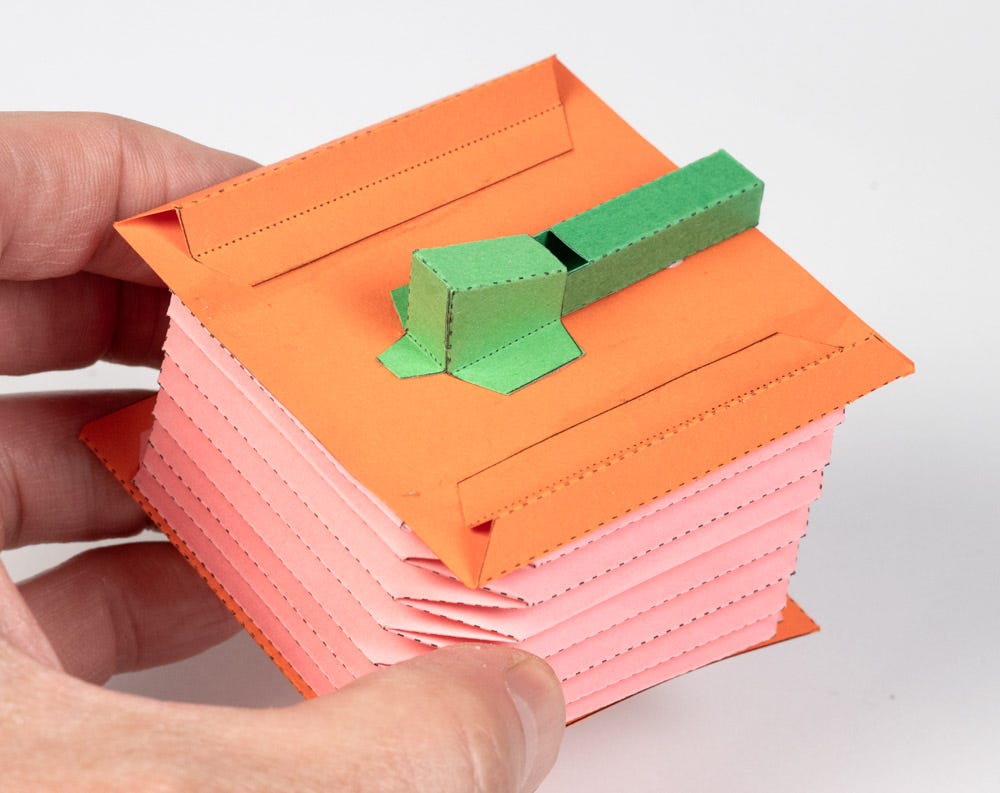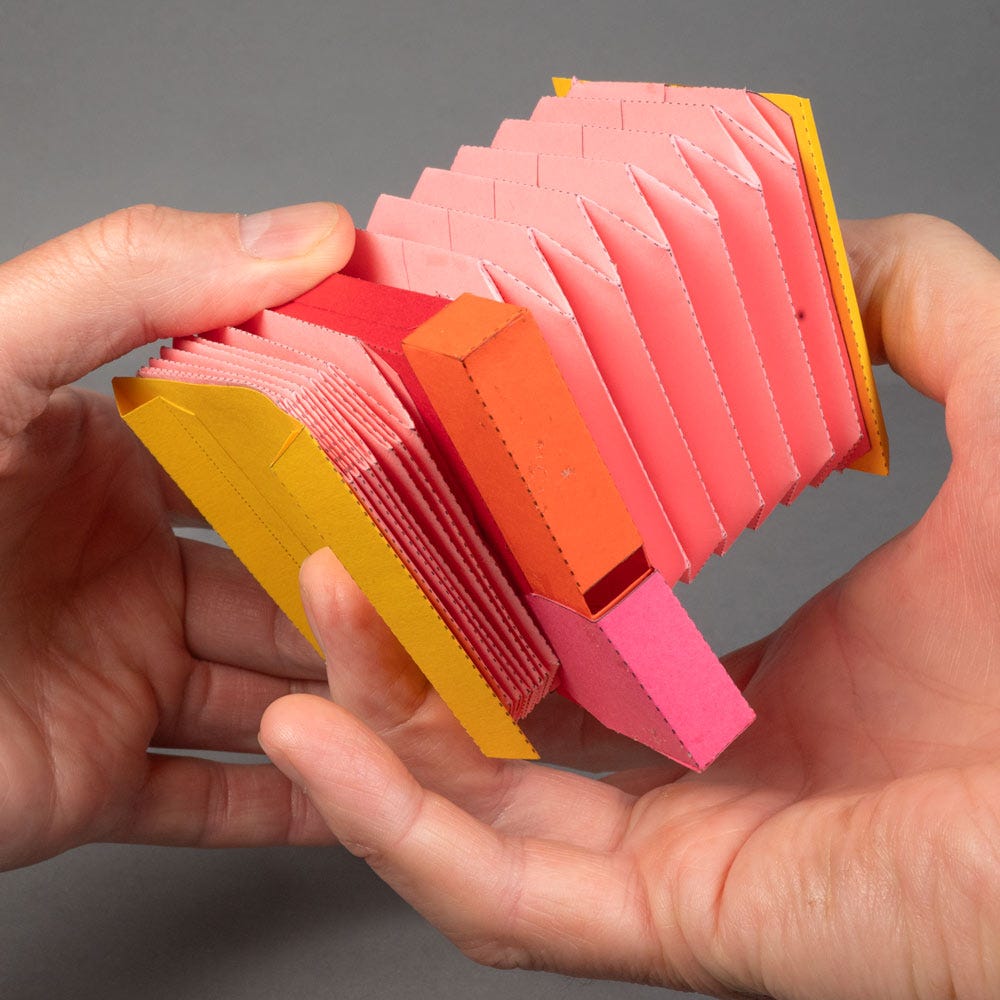Making Paper Pipes and a Cuckoo Whistle!
A #PaperEngineering Project
Having talked about making bellows in the previous newsletter, one of the obvious things to use them for is pushing air through paper pipes to make a sound.
Designing paper pipes is as much art as science and involves a fair bit of trial and error. It is, however, fairly straightforward to create a clear sounding pipe as long as you stick with a few basics. Start with a tube roughly five times as long as it is wide. Cut a slot roughly one and a half widths from the end and make it half a width high.
The cover then fits over the top of the pipe and is used to direct the air over the slot making the sound.
The cover is made deliberately sloping. The front edge of the cover lines up with the back edge of the slot in the pipe. A continuation of the slope intersects with the front end of the slot. This ensures that the air is blowing the right direction.
The two parts are made separately then carefully glued together.
Looking underneath the pipe you can see where the air intake takes the air from the bellows or whatever your air source is.
A cover is glued to the top and bottom of the bellows from the previous newsletter. A hole in the top lets air into the pipe. The finished pipe is glued into place onto the top of the bellows
If you are a premium subscriber you can download a pdf of parts and instructions for the bellows and the pipes at the foot of this newsletter. Thank you for being a subscriber!
By changing the size of the pipes you can change the pitch of the sound produced. Two pipes can be used to make two pitches.
In this new cuckoo whistle project two pipes are used to recreate the iconic sound of the cuckoo! Press one bellows then the other in quick succession to make the cuckoo sound! Premium subscribers can download the file of parts and instruction below. Non subscribers can download the project from www.robives.com here
There is a video of the cuckoo whistle in action om my Instagram here










